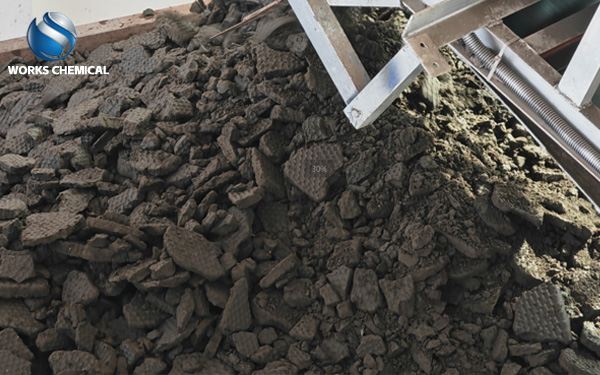
In view of the high water content of municipal sludge and the non-forming of mud, the following measures can be taken to solve the problem:

One. Optimization of sludge conditioning
Select the right sludge conditioner:
Adding appropriate sludge adjusters, such as inorganic flocculants (polyaluminum chloride, etc.) or organic polymer flocculants (polyacrylamide, etc.), through charge neutralization and bridging, the particles in the sludge are aggregated into larger floc, which is conducive to dehydration.
Select the appropriate type and dosage of sludge conditioner according to the nature of sludge to achieve the best dewatering effect.
Full mixing of sludge and conditioner:
Appropriate stirring time and method can ensure that the sludge conditioner is in full contact with the sludge, improve the sludge structure and improve the dehydration efficiency.
Two, adjust the parameters of the filter press
Optimize filter press operation:
For the sludge with too high moisture content, adjust the operating parameters of the filter press, such as pressure, filtration time, etc., to improve the filtration effect.
Regular maintenance of filter press equipment:
Regularly clean the filter cloth and filter plate to prevent blockage and ensure the smooth flow of the filter channel.
Check and maintain the feed pump and other key components of the filter press to ensure its normal operation.
Three, consider introducing new technology
More efficient filter press equipment:
Consider upgrading or replacing with more efficient filter press equipment, such as plate and frame filter press, belt filter press, etc., to improve dehydration efficiency.
Introduction of hot drying technology:
For refractory sludge, hot drying technology can be considered to reduce the moisture content of sludge through high temperature heating. But pay attention to energy consumption and cost issues.
Four. Biological treatment Technology
The use of microorganisms to degrade organic matter in the sludge, thereby reducing the amount of sludge and water content.
Anaerobic digestion is a common biological treatment method, through microorganisms in the absence of oxygen to decompose organic matter, produce biogas, while reducing the volume of sludge.
Five, comprehensive treatment strategy
Source control:
Control at the source of sludge generation, such as optimizing the sewage treatment process to reduce the amount of sludge generation.
Combination process:
According to the specific situation of sludge and treatment needs, a variety of process combinations are used for treatment, such as the combination of chemical conditioning and mechanical dehydration, biological treatment and thermal drying.
Resource utilization:
Explore the way of sludge resource utilization, such as the dehydrated sludge for land improvement, building materials, etc., to achieve the reduction of sludge, harmless and resource utilization.
In summary, to solve the problem of too high water content of municipal sludge and non-forming of pressed mud, it is necessary to start from many aspects, including optimizing sludge conditioning, adjusting the parameters of press filtration equipment, considering the introduction of new technologies, biological treatment technologies and comprehensive treatment strategies. Through the comprehensive application of these measures, the dewatering efficiency and treatment effect of sludge can be effectively improved.